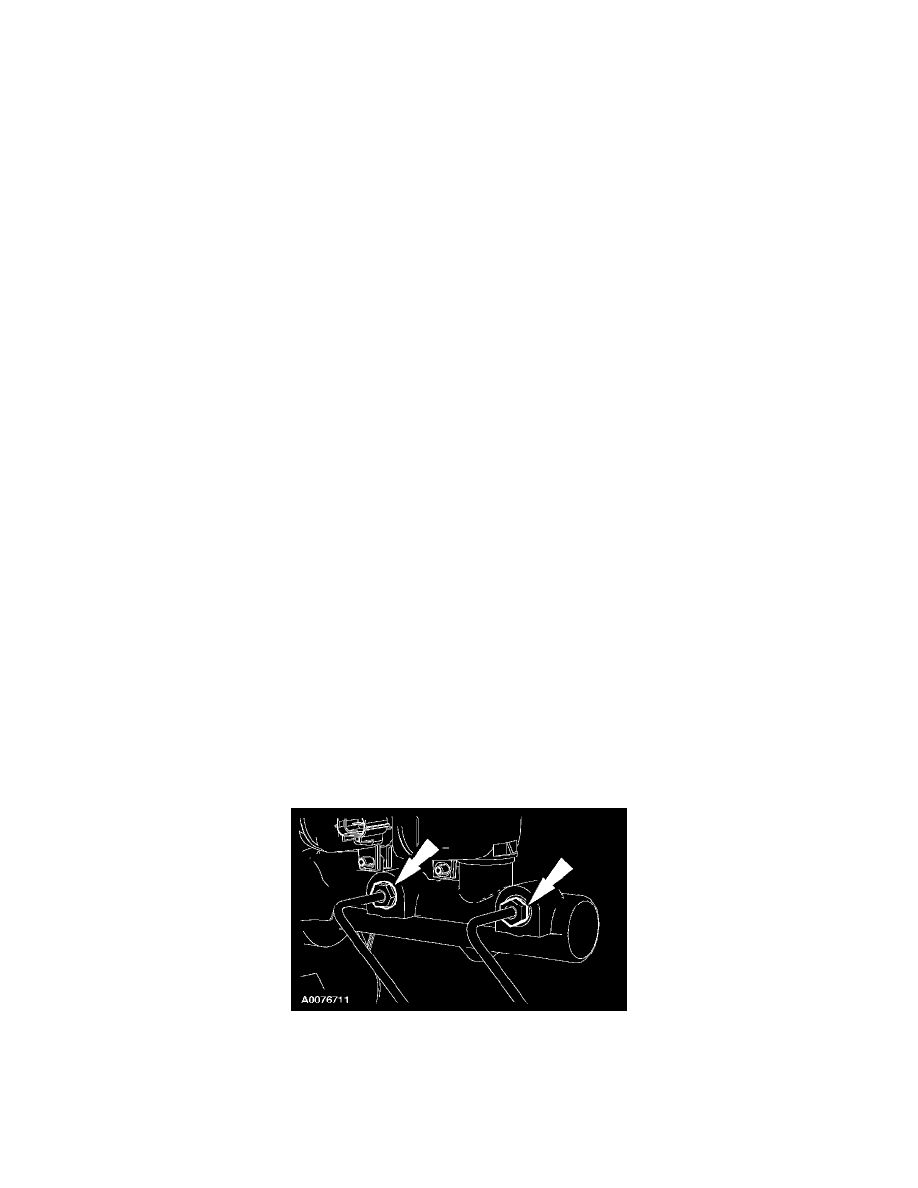F 150 2WD Pickup V8-5.4L SOHC VIN 5 (2004)

Brake Bleeding: Service and Repair
Bleeding - Components
Master Cylinder, Bench
WARNING: Brake fluid contains polyglycol ethers and polyglycols. Avoid contact with eyes. Wash hands thoroughly after handling. If
brake fluid contacts eyes, flush eyes with running water for 15 minutes. Get medical attention if irritation persists. If taken internally, drink
water and induce vomiting. Get medical attention immediately. Failure to follow these instructions may result in personal injury.
CAUTION: Do not allow the brake master cylinder reservoir to run dry during the bleeding operation. Keep the brake master cylinder reservoir filled
with the specified brake fluid. Never reuse the brake fluid that has been drained from the hydraulic system.
CAUTION: Do not spill brake fluid onto painted or plastic surfaces. If spilled, wipe up immediately before damage to the plastic or painted surfaces
occurs.
NOTE: When any part of the hydraulic system has been disconnected for repair or new installation, air may get into the system and cause spongy
brake pedal action. This requires bleeding of the hydraulic system after it has been correctly connected. The hydraulic system can be gravity bled,
manually bled or with pressure bleeding equipment.
1. Support the brake master cylinder body in a vise and fill the brake master cylinder reservoir with specified brake fluid.
2. NOTE: Original equipment lines are not intended to be used during this procedure.
Install short brake tubes with the ends submerged in the brake master cylinder reservoir.
3. Slowly press the primary piston until clear fluid flows from both brake tubes, without air bubbles.
4. Remove the short brake tubes and plug the brake tube ports.
Master Cylinder - In Vehicle
WARNING: Brake fluid contains polyglycol ethers and polyglycols. Avoid contact with eyes. Wash hands thoroughly after handling. If
brake fluid contacts eyes, flush eyes with running water for 15 minutes. Get medical attention if irritation persists. If taken internally, drink
water and induce vomiting. Get medical attention immediately. Failure to follow these instructions may result in personal injury.
CAUTION: Do not allow the brake master cylinder reservoir to run dry during the bleeding operation. Keep the brake master cylinder reservoir filled
with the specified brake fluid. Never reuse the brake fluid that has been drained from the hydraulic system.
CAUTION: Do not spill brake fluid onto painted or plastic surfaces. If spilled, wipe up immediately before damage to the plastic or painted surfaces
occurs.
NOTE: When any part of the hydraulic system has been disconnected for repair or new installation, air may get into the system and cause spongy
brake pedal action. This requires bleeding of the hydraulic system after it has been correctly connected. The hydraulic system can be gravity bled,
manually bled or with pressure bleeding equipment.
1. NOTE: When a new brake master cylinder has been installed or the system has been emptied, or partially emptied, it should be primed to prevent
air from getting into the system.
Disconnect the brake master cylinder outlet tubes.
2. NOTE: Original equipment lines are not intended to be used during this procedure.
